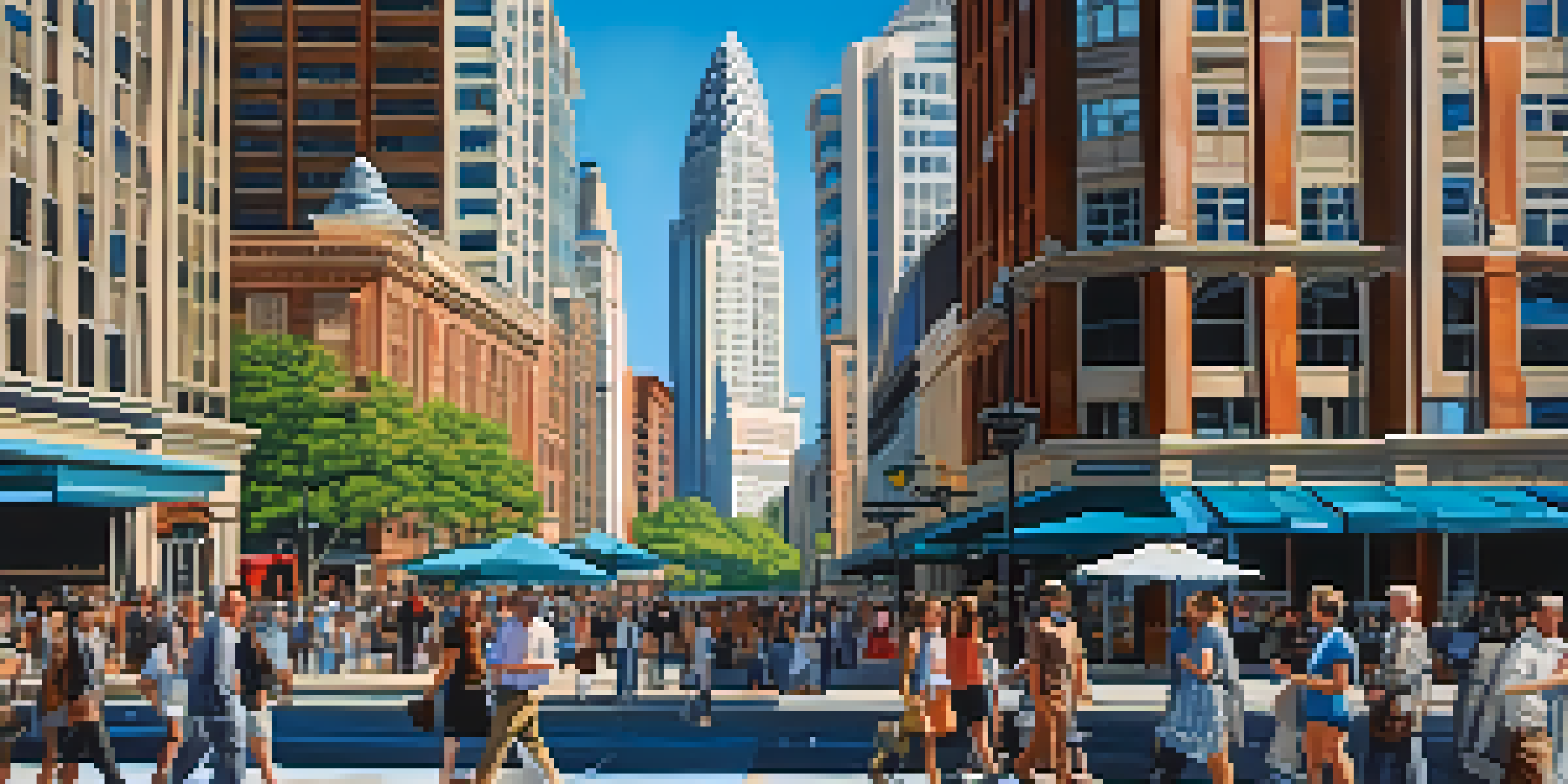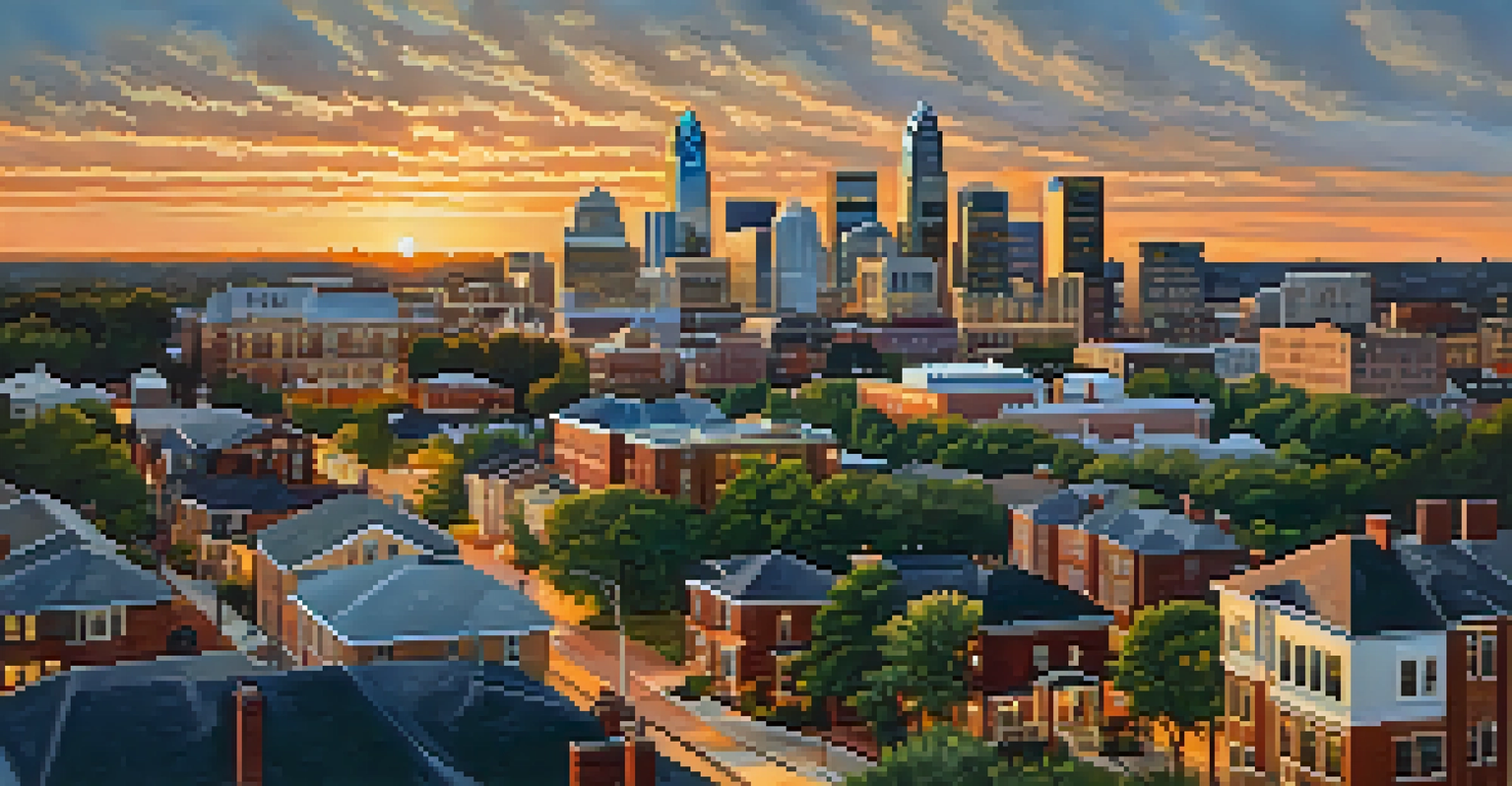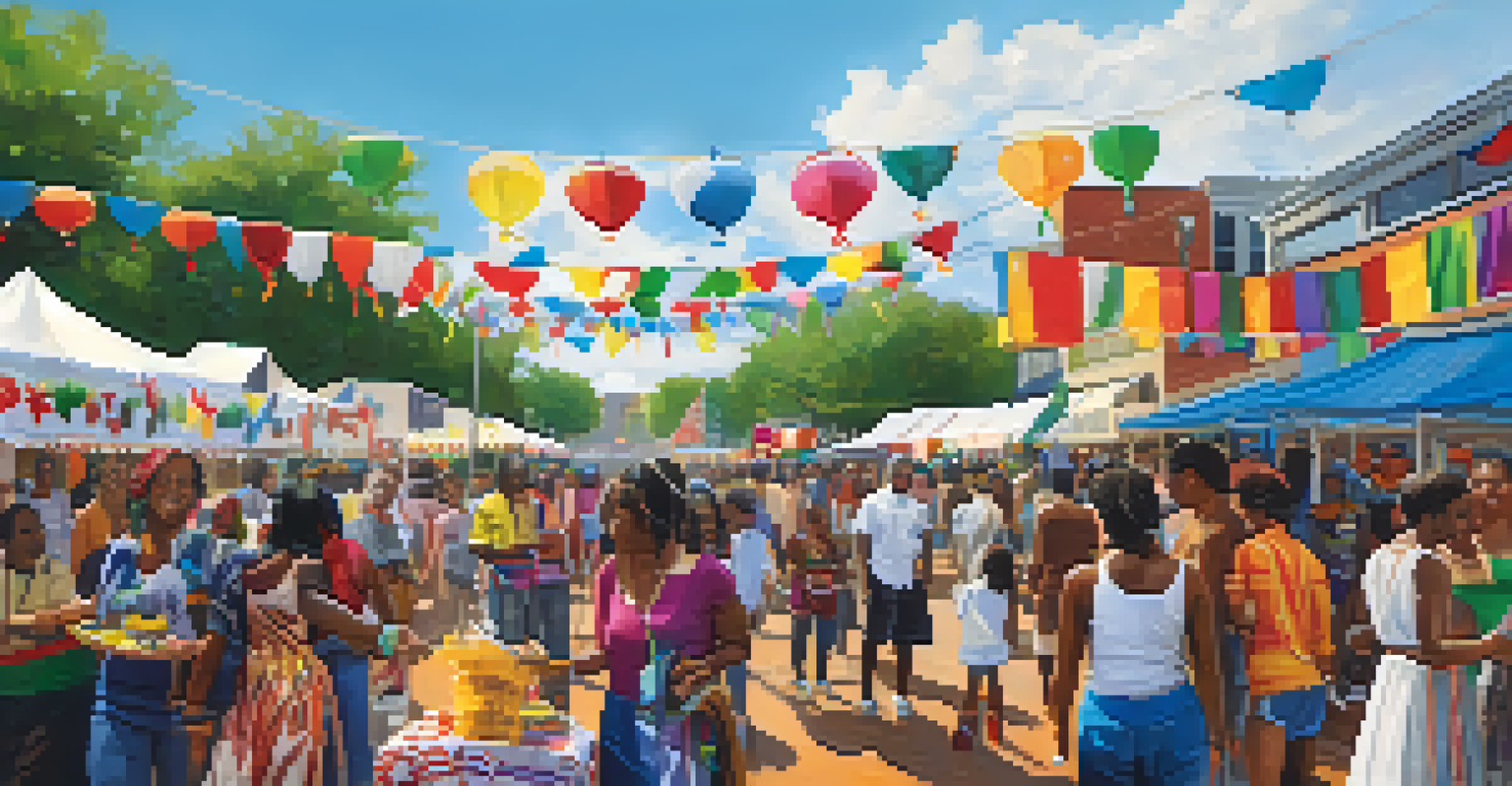Modern Charlotte: Balancing History and Urban Development

Charlotte's Historical Roots: A Foundation for Growth
Charlotte's history dates back to the 18th century, rooted in its role as a trading hub. This rich heritage is evident in the city’s architecture, from the historic Fourth Ward to the iconic Mint Museum. Understanding this foundation is essential as it informs the city’s growth and development today.
Preservation of our heritage is not a luxury; it is a necessity for our identity and future.
As the city evolved, it retained important historical sites, which serve as reminders of its past. These landmarks not only attract tourists but also foster a sense of pride among residents. Balancing the old with the new is crucial for maintaining this connection to the past.
The blend of historical significance and modernity creates a unique character for Charlotte. It allows for a narrative that respects tradition while embracing innovation. This delicate balance is what makes Charlotte a fascinating place to live and visit.
Urban Development: The Push for Modern Infrastructure
In recent years, Charlotte has seen significant urban development, focusing on infrastructure that supports its growing population. New skyscrapers, residential complexes, and transportation systems aim to meet the needs of a more modern city. This development is often driven by the booming economy, which attracts new businesses and residents alike.

However, this rapid expansion raises questions about sustainability and urban planning. City officials and developers are increasingly mindful of the implications of their projects. Striking a balance between growth and environmental impact is a priority for many stakeholders.
Balancing Growth and Heritage
Charlotte faces the challenge of modern urban development while preserving its historical identity.
Modern infrastructure not only improves the quality of life for residents but also enhances the city’s appeal to potential newcomers. For instance, the light rail system connects various neighborhoods, making commuting easier and reducing traffic congestion. This thoughtful approach to urban development showcases Charlotte’s commitment to a vibrant, interconnected community.
Preserving Heritage: Challenges of Urbanization
As Charlotte continues to grow, preserving its heritage poses a significant challenge. Developers often face pushback from local communities that advocate for the protection of historical sites. These residents recognize that losing these landmarks would mean losing a part of the city’s identity.
The city is a living organism, constantly evolving, but it is the roots of our history that give it strength.
Controversies often arise when new projects threaten to overshadow or demolish historical buildings. For example, discussions surrounding the preservation of the historic West End highlight the tension between progress and preservation. Finding solutions that honor the past while accommodating growth is essential.
Engaging the community in these discussions is vital for fostering a sense of ownership and pride. By involving residents in decision-making processes, Charlotte can create a development strategy that respects its history. This collaboration can lead to innovative solutions that blend old and new seamlessly.
Community Engagement: The Heart of Urban Development
Community engagement plays a crucial role in Charlotte’s development strategy. City officials and developers increasingly seek input from residents, ensuring that new projects align with community values. This approach helps to create spaces that resonate with those who live and work in the city.
Town hall meetings, surveys, and focus groups have become common tools for gathering feedback. These platforms allow residents to voice their concerns and ideas, making them active participants in the development process. This dialogue fosters transparency and trust between the community and decision-makers.
Community Involvement is Key
Engaging residents in the planning process fosters transparency and ensures developments reflect community values.
When residents feel heard, they are more likely to support new initiatives. This positive relationship can lead to successful projects that enhance the urban landscape while respecting historical context. Ultimately, community engagement helps to create a city that reflects the aspirations and needs of its people.
Cultural Diversity: Enriching Charlotte's Urban Landscape
Charlotte’s cultural diversity significantly enriches its urban landscape. The city is home to a melting pot of communities, each contributing unique traditions, cuisines, and perspectives. This diversity is not just a demographic fact; it actively shapes the city’s identity and development.
Cultural festivals, art shows, and culinary events celebrate this diversity, fostering a vibrant community spirit. These events not only attract visitors but also encourage residents to engage with one another. They serve as a reminder that Charlotte is more than just a growing metropolis; it’s a community of interconnected lives.
Moreover, embracing cultural diversity can lead to innovative approaches to urban development. By considering different cultural perspectives, city planners can create inclusive spaces that cater to a variety of needs. This inclusivity enhances the quality of life for all residents, making Charlotte a truly welcoming city.
Smart City Initiatives: Technology Meets Tradition
Charlotte is embracing technology through smart city initiatives that aim to improve urban living. These projects leverage data and technology to enhance city services, from traffic management to waste disposal. By integrating smart solutions, Charlotte seeks to create a more efficient and livable urban environment.
For example, smart traffic signals can adapt to real-time traffic conditions, reducing congestion and improving commute times. Such innovations demonstrate how technology can complement historical infrastructure. This harmonious blend of old and new exemplifies Charlotte's commitment to modern urban planning.
Embracing Cultural Diversity
The city’s rich cultural diversity enhances its development and creates an inclusive environment for residents.
However, implementing these initiatives requires careful consideration of existing historical sites. Developers must ensure that new technologies do not compromise the integrity of the city’s heritage. By finding ways to integrate smart solutions respectfully, Charlotte can lead the way in sustainable urban development.
The Future of Charlotte: A Vision for Balance
Looking ahead, Charlotte faces the challenge of balancing growth with preservation. As the city continues to attract new residents and businesses, planners must prioritize sustainable development that respects its rich history. This vision for the future requires collaboration among government, developers, and the community.
Creating a cohesive plan that addresses housing, transportation, and public spaces will be essential. By adopting a holistic approach, Charlotte can ensure that its growth benefits all residents while preserving its unique character. This strategic planning will help the city maintain its charm amid modernization.

Ultimately, the future of Charlotte lies in its ability to honor its past while embracing innovation. By fostering a culture of collaboration and inclusivity, the city can continue to thrive as a vibrant urban center. This balance will ensure that Charlotte remains a cherished place for generations to come.